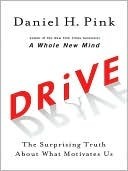More on this book
Community
Kindle Notes & Highlights
Read between
December 24 - December 24, 2019
Lakhani and Wolf uncovered a range of motives, but they found “that enjoyment-based intrinsic motivation, namely how creative a person feels when working on the project, is the strongest and most pervasive driver.”2 A large majority of programmers, the researchers discovered, reported that they frequently reached the state of optimal challenge called “flow.”
Of course, the starting point for any discussion of motivation in the workplace is a simple fact of life: People have to earn a living. Salary, contract payments, some benefits, a few perks are what I call “baseline rewards.” If someone’s baseline rewards aren’t adequate or equitable, her focus will be on the unfairness of her situation and the anxiety of her circumstance.
The best use of money as a motivator is to pay people enough to take the issue of money off the table.
Only contingent rewards—if you do this, then you’ll get that—had the negative effect. Why? “If-then” rewards require people to forfeit some of their autonomy. Like the gentlemen driving carriages for money instead of fun, they’re no longer fully controlling their lives. And that can spring a hole in the bottom of their motivational bucket, draining an activity of its enjoyment.
Atomic habits?? If-then habits and goals; is it different if reward is self selected and imposed with if-then?
“Rewards do not undermine people’s intrinsic motivation for dull tasks because there is little or no intrinsic motivation to be undermined.”
Here’s what you shouldn’t do: Offer an “if-then” reward to the design staff. Do not stride into their offices and announce: “If you come up with a poster that rocks my world or that boosts attendance over last year, then you’ll get a ten-percent bonus.” Although that motivational approach is common in organizations all over the world, it’s a recipe for reduced performance. You’ll likely get activity—but not much creativity.


